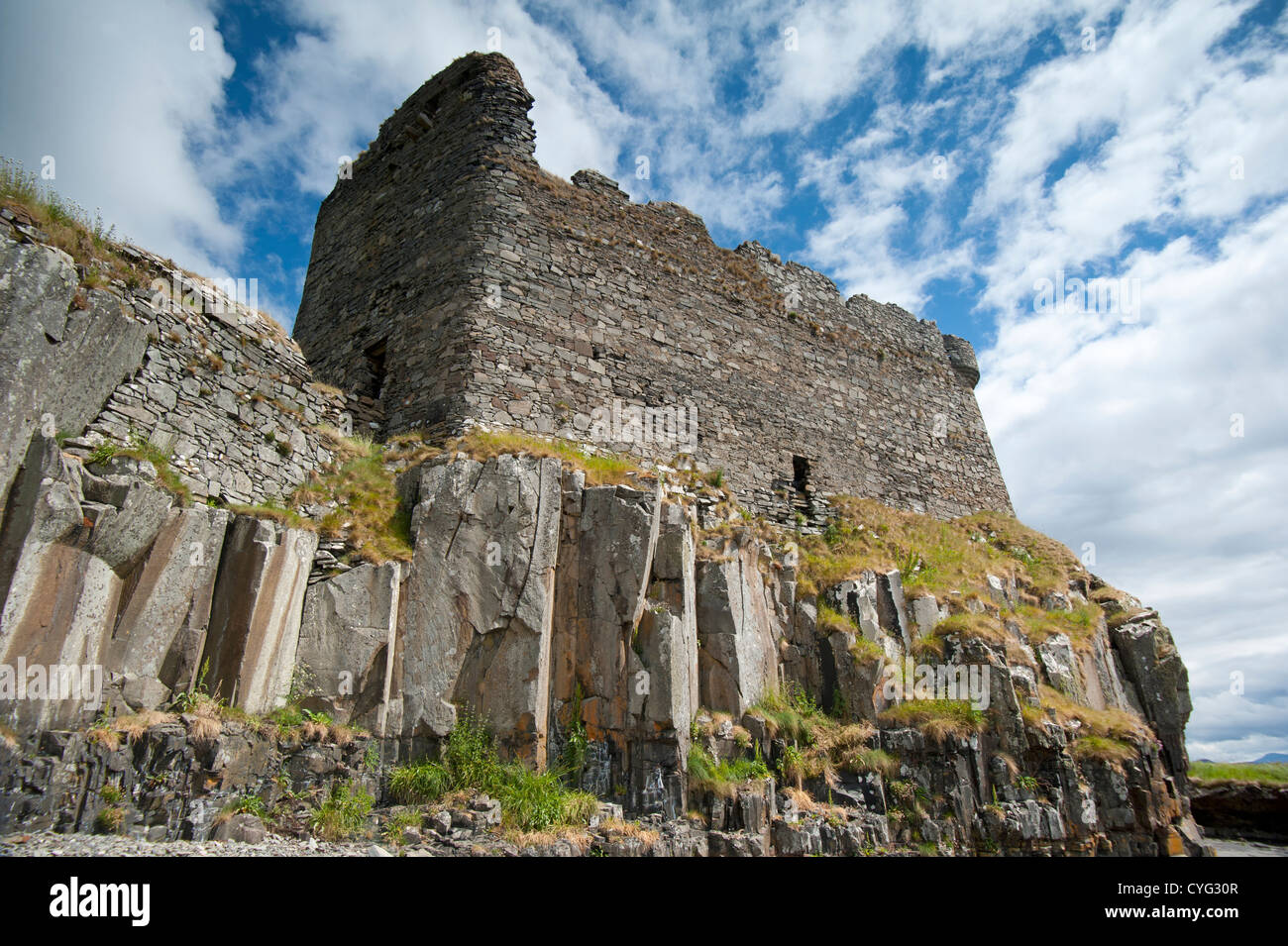Mingarry Castle at Kilchoan at Ardnamurchan, Lochaber. Scottish West Coast. SCO 8763

Image details
Contributor:
David Gowans / Alamy Stock PhotoImage ID:
CYG30RFile size:
70 MB (3.7 MB Compressed download)Releases:
Model - no | Property - noDo I need a release?Dimensions:
6063 x 4035 px | 51.3 x 34.2 cm | 20.2 x 13.5 inches | 300dpiDate taken:
18 June 2012Location:
Mingarry Castle, Kilchoan. Ardnamurchan. Lochaber. Scotland. United Kingdom.More information:
Mingary Castle occupies a strategically important site on a sea-girt promontory of rock about 2km SE of Kilchoan. It comprises a curtain-wall of irregular hexagon plan enclosing a courtyard which measures about 19.7m from N to S by 17.9m transversely. Within the curtain-wall there stand three ranges of buildings, occupying the N, W and SE sides of the courtyard respectively, while entrance- doorways pierce the NW and S sections of the curtain at ground-floor level. A stone forestair rises within the NW corner of the courtyard to give access to a battlemented parapet-walk. On its three landward sides the curtain-wall has a width of 2.7m and a height of 14.0m, but on the remaining sides it has a width of only 1.8m and a height of about 8.5m. The main body of the curtain-wall can be ascribed to the 13th century. The NW entrance-doorway, although subsequently altered, evidently belongs to the same period, while there is also evidence for the former existence of a contemporary range of domestic buildings occupying the N side of the courtyard. There is nothing to suggest that any major alteration was made to the castle during the medieval period, but towards the end of the 16th century the upper part of the curtain-wall was remodelled, and a sea-gate was constructed, or reconstructed, in the S curtain-wall. During the 17th century, further modifications were made to the NNW and W sections of the parapet-walk, and probably also to the NW entrance-doorway. There is no evidence to indicate what alterations, if any, were made to the courtyard buildings before about 1700. At some time during the early 18th century, however, new buildings were erected on the N and W sides of the courtyard, the N range being a substantial four-storeyed block, while the W range took the form of a lean-to structure of two main storeys, possibly incorporating a kitchen.